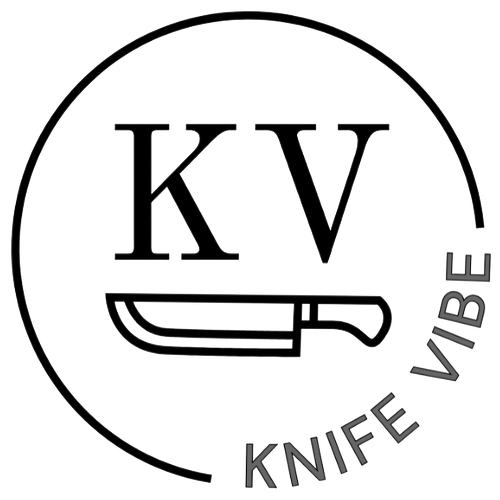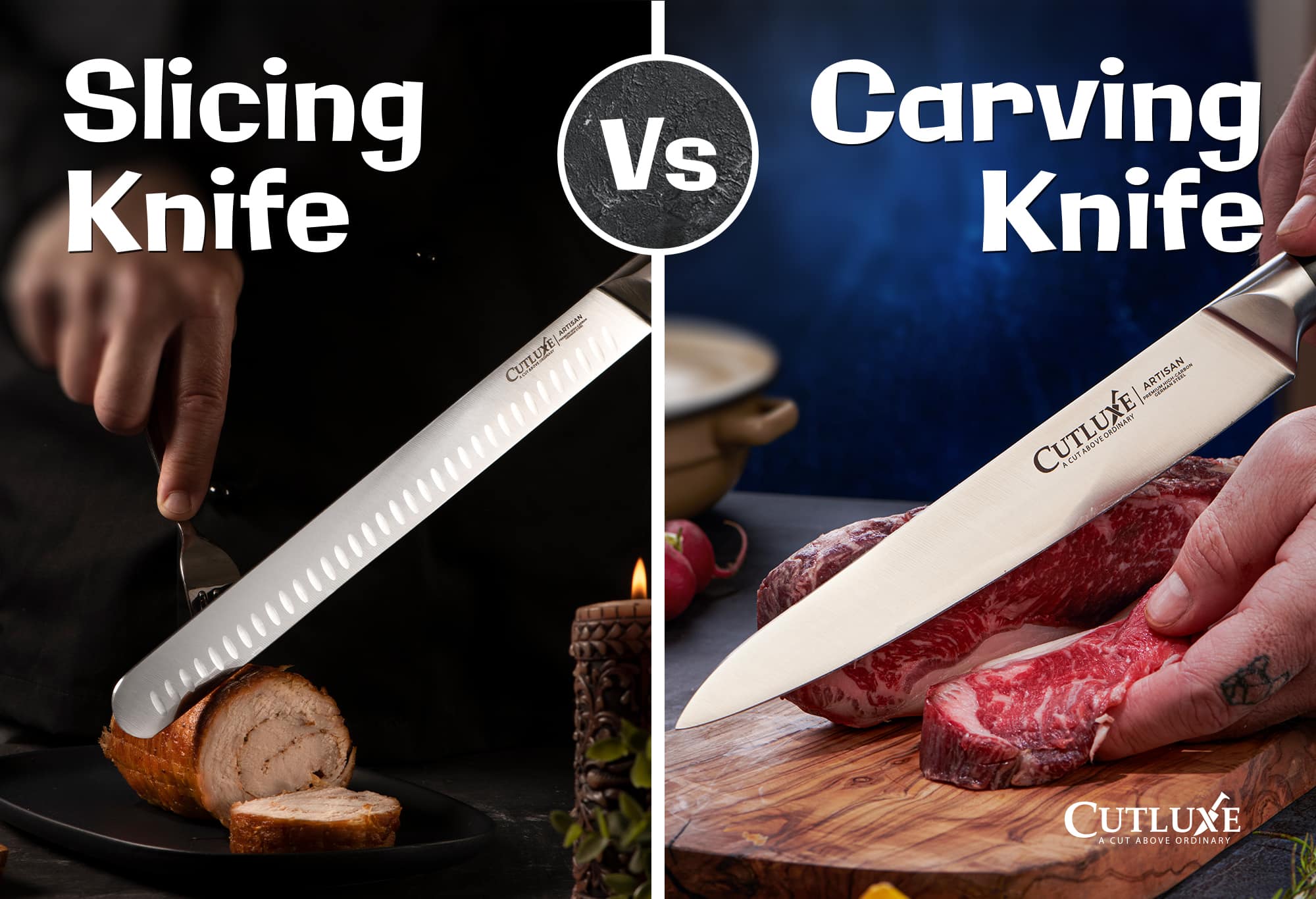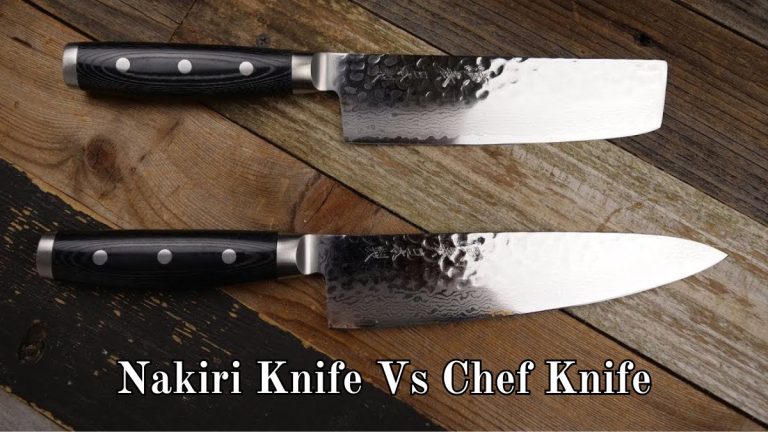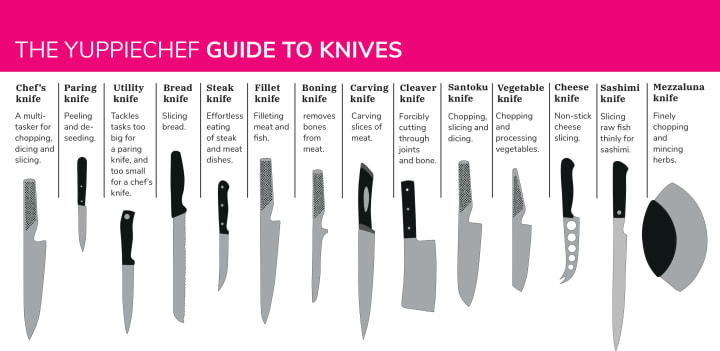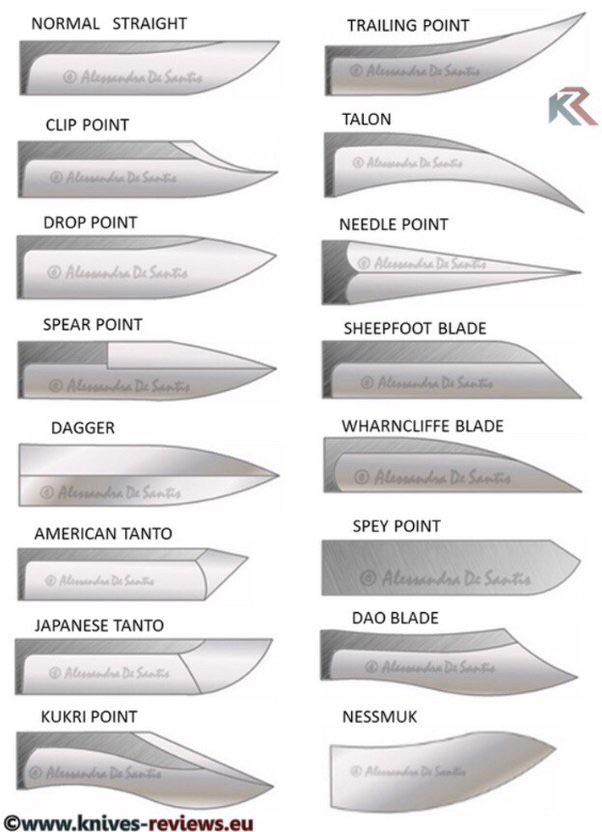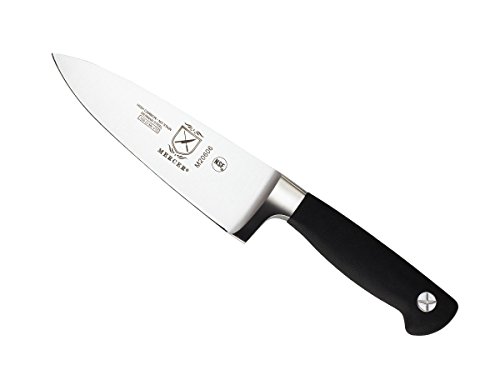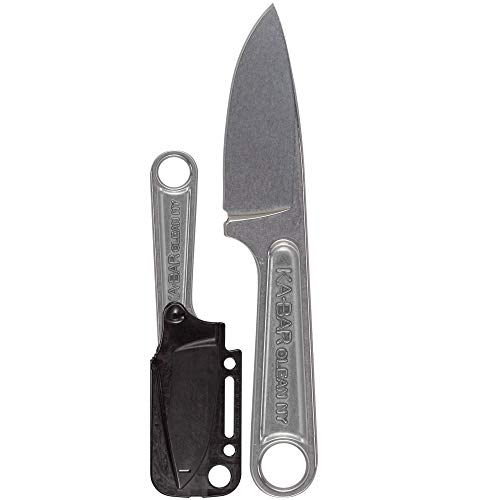Carving Vs Slicing Knife: Which One is Best for Your Kitchen?
Choosing between a carving knife and a slicing knife can be tricky. Both have distinct purposes in the kitchen.
When it comes to preparing meals, having the right knife makes a difference. Carving knives and slicing knives may look similar, but they serve unique functions. Carving knives are designed for precise, clean cuts, often used for meats and roasts.
Slicing knives, on the other hand, excel in cutting thinner slices of food, such as fruits and vegetables. Understanding these differences helps in selecting the right tool for your kitchen needs. This guide will explore the key features and uses of carving and slicing knives, aiding you in making an informed choice.
Carving Knife Basics
A carving knife is a must-have in any kitchen. It helps in cutting thin, precise slices of meat. Let’s dive into the details of this essential kitchen tool.
Design And Features
A carving knife has a long, narrow blade. This design reduces drag and makes slicing easier. The blade length usually ranges between 8 to 15 inches. It often has a pointed tip which helps in making detailed cuts.
One key feature is the blade’s flexibility. This allows for better control while carving. The handle is usually ergonomic, ensuring a comfortable grip. Many carving knives also come with a bolster. This is a thick junction between the blade and handle. It adds balance and safety while cutting.
| Feature | Description |
|---|---|
| Blade Length | 8 to 15 inches |
| Blade Shape | Long, narrow, and pointed |
| Handle | Ergonomic for comfort |
| Flexibility | Allows better control |
| Bolster | Provides balance and safety |
Common Uses
Carving knives are primarily used for slicing large cuts of meat. This includes roast, turkey, and ham. They are perfect for special occasions like Thanksgiving and Christmas. The long blade ensures you get even, thin slices every time.
Apart from meat, they can also slice through large fruits. Think watermelons and pineapples. Their precision is unmatched. It ensures that the slices are uniform and presentable.
- Roast
- Turkey
- Ham
- Large fruits like watermelon
- Pineapple
Using a carving knife makes serving easier. Your guests will appreciate the perfectly sliced portions. It elevates your meal presentation, making it more appealing.

Credit: www.curated.com
Slicing Knife Basics
The slicing knife is a valuable tool in any kitchen. Its primary function is to make precise, thin cuts of meat, bread, and vegetables. This knife is known for its ability to create uniform slices, enhancing the presentation and texture of food.
Design And Features
A slicing knife has a long, narrow blade. This blade is typically 8 to 14 inches long. The blade often has a rounded tip and a scalloped edge. These features help reduce friction and prevent food from sticking. The handle is designed for a comfortable grip, which makes it easy to control.
| Feature | Details |
|---|---|
| Blade Length | 8-14 inches |
| Blade Shape | Narrow, rounded tip |
| Edge | Scalloped |
| Handle | Comfortable grip |
Common Uses
A slicing knife is versatile. It is ideal for cutting large roasts and hams. It is also perfect for slicing bread, cakes, and pastries. Vegetables can also be sliced thinly and evenly with this knife.
- Cutting large roasts
- Slicing hams
- Cutting bread
- Slicing cakes and pastries
- Thinly slicing vegetables
Material And Blade Quality
Choosing the right knife for your kitchen tasks is crucial. The material and blade quality play a significant role. Whether you are selecting a carving knife or a slicing knife, understanding the differences in blade quality can enhance your cooking experience.
Types Of Steel
The type of steel used in knives affects their performance and durability. Carving and slicing knives may use different types of steel, each with unique benefits.
| Type of Steel | Characteristics |
|---|---|
| Stainless Steel | Resistant to rust and staining. Requires less maintenance. |
| Carbon Steel | Extremely sharp. Requires regular care to prevent rust. |
| High-Carbon Stainless Steel | Combines sharpness of carbon steel with rust resistance of stainless steel. |
Blade Sharpness
Blade sharpness is vital for both carving and slicing knives. A sharper blade ensures precise cuts and less effort while cutting.
- Carving Knife: Designed for cutting meat. Needs to be razor-sharp.
- Slicing Knife: Used for fruits, vegetables, and bread. Requires a fine edge.
Maintaining the sharpness of your knives is essential. Regular honing and occasional sharpening keep them in top shape.
:max_bytes(150000):strip_icc()/wsthof-classic-9-carving-knife-70f17d994a09473a8a7543b075b02a4d.jpg)
Credit: www.seriouseats.com
Handle And Grip
Choosing between a carving knife and a slicing knife involves many factors. One crucial aspect is the handle and grip. The right handle ensures comfort and control. This section will explore the ergonomics and material options for these knives.
Ergonomics
Ergonomics play a vital role in knife handling. A well-designed handle reduces strain on your hand. It ensures a secure grip during use. Carving knives often have larger handles for stability. Slicing knives may have slimmer handles for precision. Understanding ergonomics helps choose the right knife for your needs.
Material Options
Handles come in various materials. Common options include wood, plastic, and stainless steel. Wooden handles offer a classic look. They provide a comfortable grip but need maintenance. Plastic handles are lightweight and easy to clean. They offer good grip but may not last as long. Stainless steel handles are durable and sleek. They can be slippery if not textured properly. Each material has its pros and cons. Choose one that suits your preference and usage.
Precision And Control
In the culinary world, precision and control are key. Whether you are carving a roast or slicing a loaf of bread, the right knife makes a big difference. This section will explain how carving and slicing knives offer precision and control.
Carving Knife Precision
A carving knife excels in precision. It has a long, thin blade. This design lets you make thin, even cuts. Perfect for meats like turkey or roast beef.
Key features of carving knives:
- Long, narrow blade
- Sharp edge
- Pointed tip
These features help in controlling the thickness of each slice. The pointed tip allows for intricate cuts. Ensuring each piece looks professional.
Slicing Knife Control
A slicing knife offers great control. Its blade is often longer and more flexible. This helps in making smooth, consistent cuts through soft foods like bread or cake.
Key features of slicing knives:
- Long, flexible blade
- Rounded tip
- Serrated or straight edge
The flexibility of the blade reduces tearing. This is crucial for delicate foods. The serrated edge is especially helpful for crusty bread, ensuring clean slices without crushing.
| Knife Type | Best For | Key Features |
|---|---|---|
| Carving Knife | Meats | Long, narrow blade; Sharp edge; Pointed tip |
| Slicing Knife | Bread, Cake | Long, flexible blade; Rounded tip; Serrated or straight edge |
:max_bytes(150000):strip_icc()/sea-slicerknives-shun-set-taylor-murray-05-1bc263b41d6749928fa52c38f4e9981c.jpeg)
Credit: www.seriouseats.com
Maintenance And Care
Proper maintenance and care are essential for keeping your carving and slicing knives in excellent condition. Regular care ensures they stay sharp and safe to use. This section covers sharpening techniques and proper storage methods to help extend the life of your knives.
Sharpening Techniques
Sharpening your knives is crucial for maintaining their performance. Use a whetstone to sharpen both carving and slicing knives. Place the knife at a 20-degree angle against the stone. Slowly slide the blade along the stone, applying even pressure. Repeat this process until the edge feels sharp.
Alternatively, use a sharpening rod. Hold the rod vertically and slide the knife down at a 20-degree angle. Do this on both sides of the blade. Electric sharpeners are another option. Follow the manufacturer’s instructions for the best results.
Proper Storage
Storing your knives properly prevents damage and accidents. Use a knife block to keep the blades safe and organized. Magnetic strips are also a good option. They keep the knives accessible and secure. Ensure the magnets are strong enough to hold the knives.
Consider using blade guards. These covers protect the edges from dulling and keep them safe during storage. Avoid tossing knives into drawers. This can cause nicks and dullness. Proper storage extends the life of your carving and slicing knives.
Best Uses In The Kitchen
Choosing the right knife can make kitchen tasks easier. Carving and slicing knives have distinct roles. Understanding their best uses helps you work efficiently and safely.
Meat Preparation
Carving knives excel in meat preparation. Their long, thin blades cut through large roasts easily. They make slicing turkey, ham, and chicken precise. The sharp blade ensures even slices. This is key for serving attractive plates.
Slicing knives are also useful for meat. They cut thin, uniform slices of cooked meats. These knives are ideal for deli meats and charcuterie boards. Their flexible blades help navigate around bones and joints.
Vegetable And Fruit Preparation
Carving knives are not limited to meat. They can handle large vegetables like pumpkins and squashes. Their strong blade cuts through tough skins and dense flesh. This makes them handy for prepping hearty vegetables.
Slicing knives shine in fruit and vegetable preparation. Their thin blades create smooth cuts in soft fruits and vegetables. Use them for tomatoes, cucumbers, and even bread. They minimize crushing and tearing, preserving texture and appearance.
Choosing The Right Knife
Choosing the right knife for your kitchen can be challenging. You need to consider your needs and preferences. The debate often lies between carving and slicing knives. Both have their unique advantages. This section will help you decide which one suits you best.
Personal Preference
Your personal preference plays a big role in choosing a knife. Some people prefer the control a carving knife offers. Others like the precision of a slicing knife. Think about what feels comfortable in your hand. The weight and balance of the knife are important too. Visit a store and try holding different knives. This way, you can feel which one you like best.
Kitchen Needs
Consider your kitchen needs when picking a knife. A carving knife is great for large roasts and poultry. It is perfect for cutting through meat with bones. A slicing knife is better for thin, even slices. It is ideal for slicing bread, fruits, and vegetables. Think about what you cook most often. Choose the knife that fits those tasks.
In summary, choosing between a carving and slicing knife depends on your preferences and needs. Try out different knives to find the one that feels right. Consider what you cook and pick the knife that matches those tasks.
Frequently Asked Questions
What Is A Carving Knife Used For?
A carving knife is used for slicing thin cuts of meat. It is ideal for roasts, poultry, and large cooked meats.
What Makes A Slicing Knife Different?
A slicing knife has a long, narrow blade. It is designed for precise cuts and slicing through softer foods like bread and cakes.
Can I Use A Carving Knife For Bread?
It is not recommended to use a carving knife for bread. Carving knives are best for meats, while bread knives have serrated edges for easier slicing.
Which Knife Is Better For Turkey?
A carving knife is better for turkey. It allows for thin, even slices, making it perfect for large cooked meats like turkey.
Conclusion
Choosing between a carving knife and a slicing knife depends on your needs. Carving knives excel at precise cuts on meats. Slicing knives work well for bread and vegetables. Both knives have unique strengths. Consider your cooking habits. Select the knife that best fits your kitchen tasks.
A good knife improves your cooking experience. Happy cooking!
